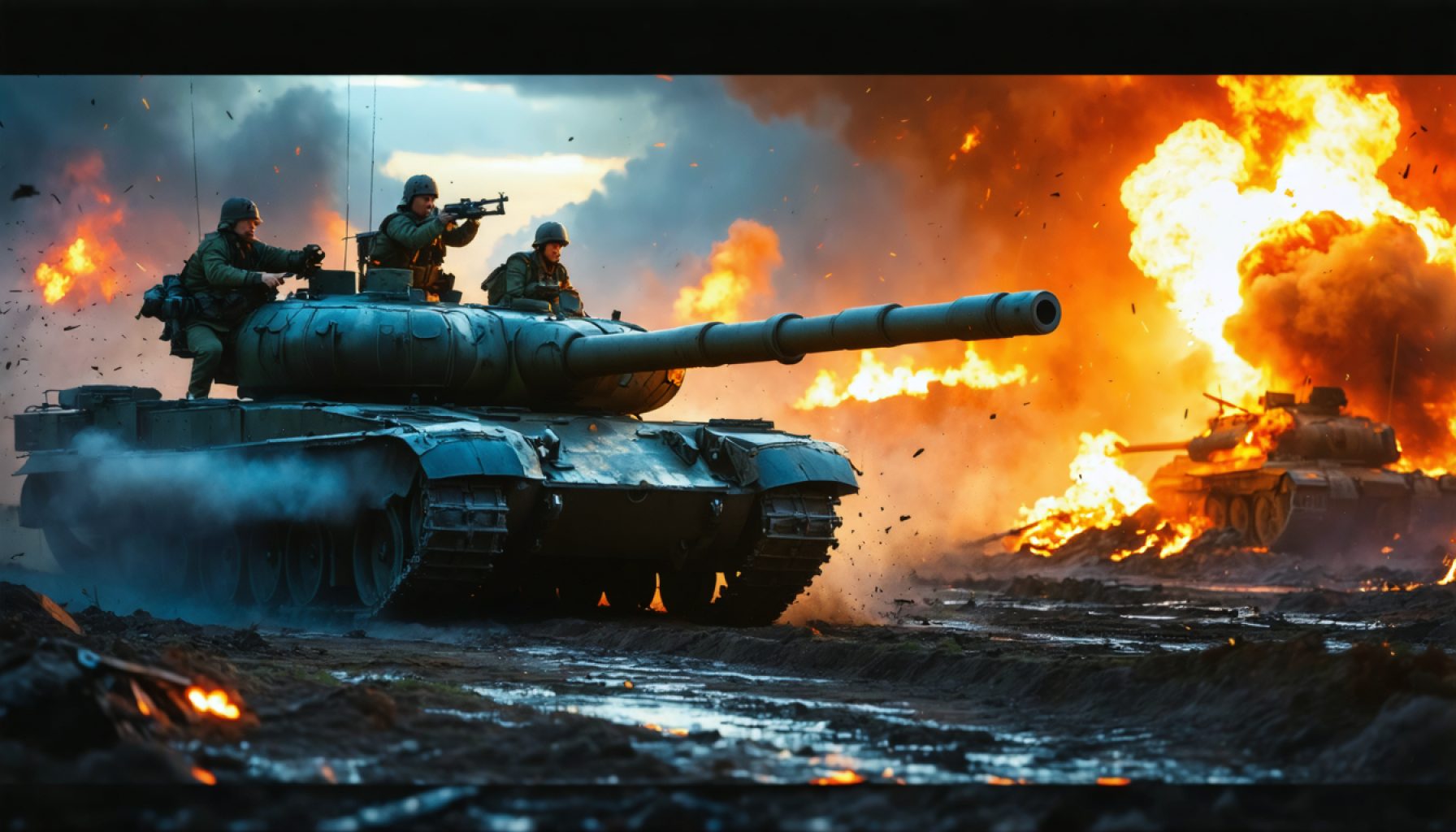- Russian troops have advanced, capturing the Ukrainian-held village of Oleshnya in the Kursk region, highlighting the strategic shifts in the Russia-Ukraine conflict.
- This capture symbolizes not just a geographical win for Russia but reflects the ongoing tensions and struggles over regional dominance.
- The ceasefire agreement remains strained, with international demands for peace contrasting with the realities on the ground.
- For Ukraine, the loss signifies a critical juncture, with forces regrouping in the village of Gornal, facing decisions between negotiation and defiance.
- The ongoing conflict underscores the need for dialogue and peaceful resolution amidst rising human costs and geopolitical complexities.
- The region anticipates further developments, questioning how many more villages will be impacted before a lasting peace is achieved.
Amidst the swirling chaos of a region fraught with historical tensions, Russian troops have staged a striking advance, capturing the Ukrainian-held village of Oleshnya in the Kursk region. As autumn leaves swirled in the cold winds along the Russia-Ukraine border, the intricate chess game of territorial advantage seemed to pivot once more in Russia’s favor.
Russian battalions, reportedly in a show of calculated precision, took control of the embattled village. This operation leaves the strategists in Kyiv and their international allies mulling over dwindling strategic positions, notably with Gornal now standing as Ukraine’s last bastion in Kursk. The echoes of artillery fire have, for now, dimmed in Oleshnya, yet the tremors of its aftermath may reverberate long into the geopolitical landscape.
This development adds a new wrinkle to an already strained ceasefire agreement, which has faltered under pressures of diplomacy and national sovereignty. Despite calls from international bodies for adherence to peace, the ground beneath the Kursk region has remained hot with anxious anticipation.
The capture of Oleshnya is not merely a geographical win but a symbolic gesture in the grand theatre of regional dominance. It casts a spotlight once more on the fragile and, at times, arbitrary lines that define national borders — lines drawn by ambition and defended by resolve.
For Ukraine, the loss means a critical juncture. As their forces regroup in Gornal — encircled yet unyielding — they find themselves at a crossroads between negotiation and steadfast defiance. The pursuit of peace and stability looms ever more vital, as each skirmish brings its untold stories of hardship and heroism.
The takeaway is clear: the ebb and flow of conflict in the Kursk region is a stark reminder of the complexities wrapped within modern geopolitics. With each village exchanged, the human cost mounts, urging a greater call for dialogue, mutual understanding, and the unyielding pursuit of a peaceful resolution.
In this ever-evolving narrative at the border, the question looms larger each day — as flags rise and fall, how many more villages must echo with history before respite is found? The region waits for an answer, holding its breath as the pages of history continue to turn.
The Hidden Layers Behind Russia’s Strategic Moves in Ukraine
Tactical Insights and Strategic Shifts
The capture of Oleshnya by Russian forces in the ongoing conflict in Ukraine’s Kursk region marks a significant development. This move, while militarily strategic, also underlines deeper geopolitical dynamics. Here’s what you need to know:
1. Understanding Geopolitical Context: The Kursk region, historically significant due to its proximity to the Russian-Ukrainian border, has often been a focal point of military strategy. The recent capture is not just a military advantage but a symbolic representation of power, reflecting broader regional dynamics.
2. Impacts on Ceasefire Agreements: The operation has put further strain on existing ceasefire agreements. Such advancements can destabilize diplomatic efforts and complicate peace negotiations, highlighting the intricacies of diplomatic relations in conflict zones.
3. Geographical Importance: Oleshnya’s location is crucial due to its strategic proximity to the last Ukrainian stronghold of Gornal. The capture provides the Russian military with a tactical edge, potentially enabling further advances or strengthening defensive positions.
Real-World Implications
How-To Navigate the Situation
– Diplomatic Engagement: Continued diplomatic dialogue is essential. Engaging in multilateral discussions with international bodies such as the United Nations can foster a path towards conflict resolution.
– Strategic Defense Reevaluation: Ukraine must assess its defensive strategies, particularly around key strongholds, to prevent further territorial losses.
Market Forecasts & Industry Trends
– Defense Spending: Expect an increase in defense budgets both in Ukraine and neighboring countries as tensions escalate, potentially impacting the regional arms trade.
– Energy Market Volatility: Conflicts in regions like Kursk can lead to fluctuations in energy supply routes, affecting global energy prices and market stability.
Reviews & Limitations
– Limitations of Military Action: While territories may be gained or lost, long-term peace cannot be achieved through military action alone. The human toll and displacement of citizens underscore its limits.
Expert Opinions and Predictions
– Insider Insights: Analysts suggest that this conflict could either escalate further or prompt renewed calls for an internationally mediated peace process, depending on diplomatic developments in the coming months.
Actionable Recommendations
– For Policy Makers: Prioritize diplomatic channels and enhance communication with international partners to stabilize the region.
– For Citizens and NGOs: Support humanitarian efforts and raise awareness about the impact of the conflict on civilian life.
Quick Tips for Staying Informed
– Follow Reliable News Sources: Stay updated with developments from credible sources such as the BBC, Reuters, and regional expert analyses.
– Engage in Peace Initiatives: Participate in or support organizations focused on conflict resolution and humanitarian aid distribution.
Conclusion
The situation in the Kursk region is a microcosm of larger geopolitical shifts. While the immediate impacts are felt locally, their reverberations extend far beyond, influencing global peace dynamics. As we navigate these turbulent waters, the emphasis remains on achieving enduring peace through dialogue and cooperation.
For more insights and updates, visit the United Nations and BBC.
